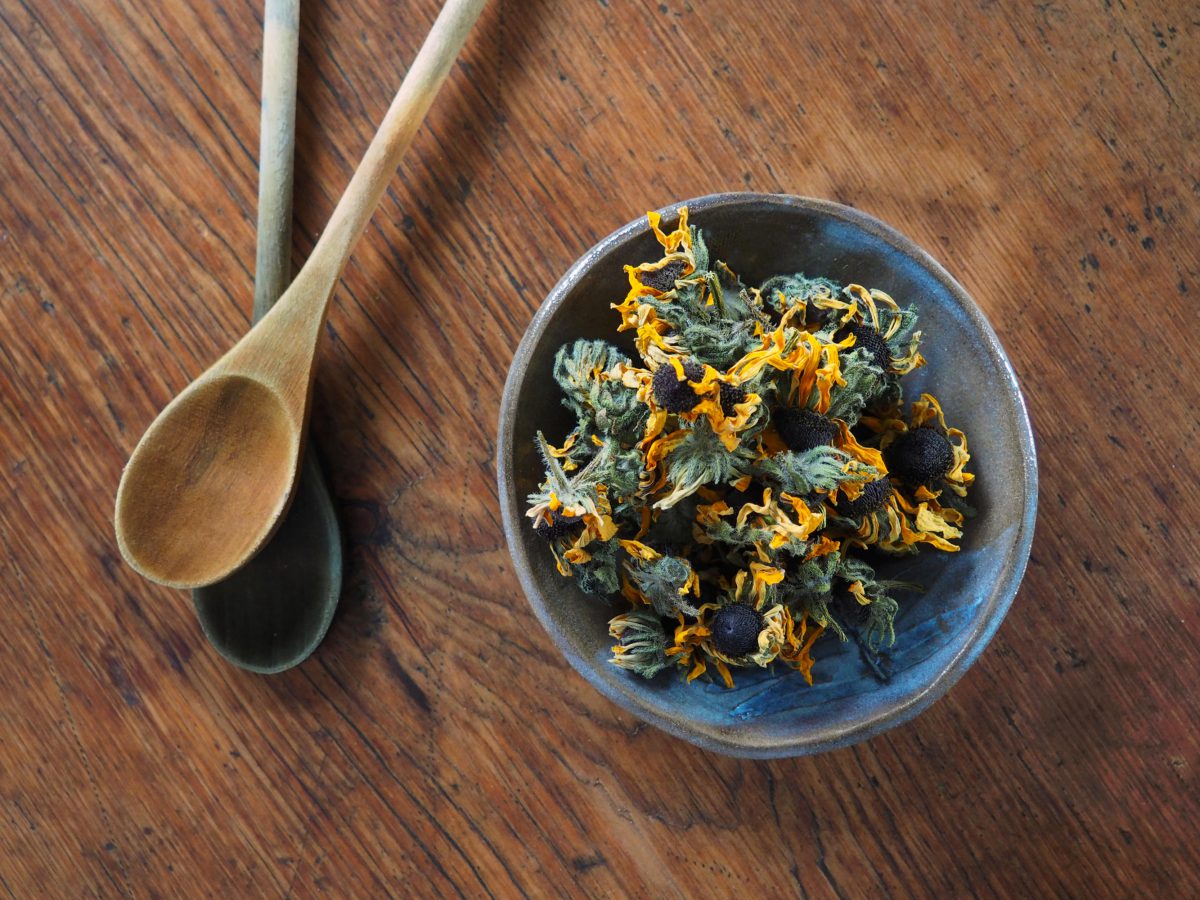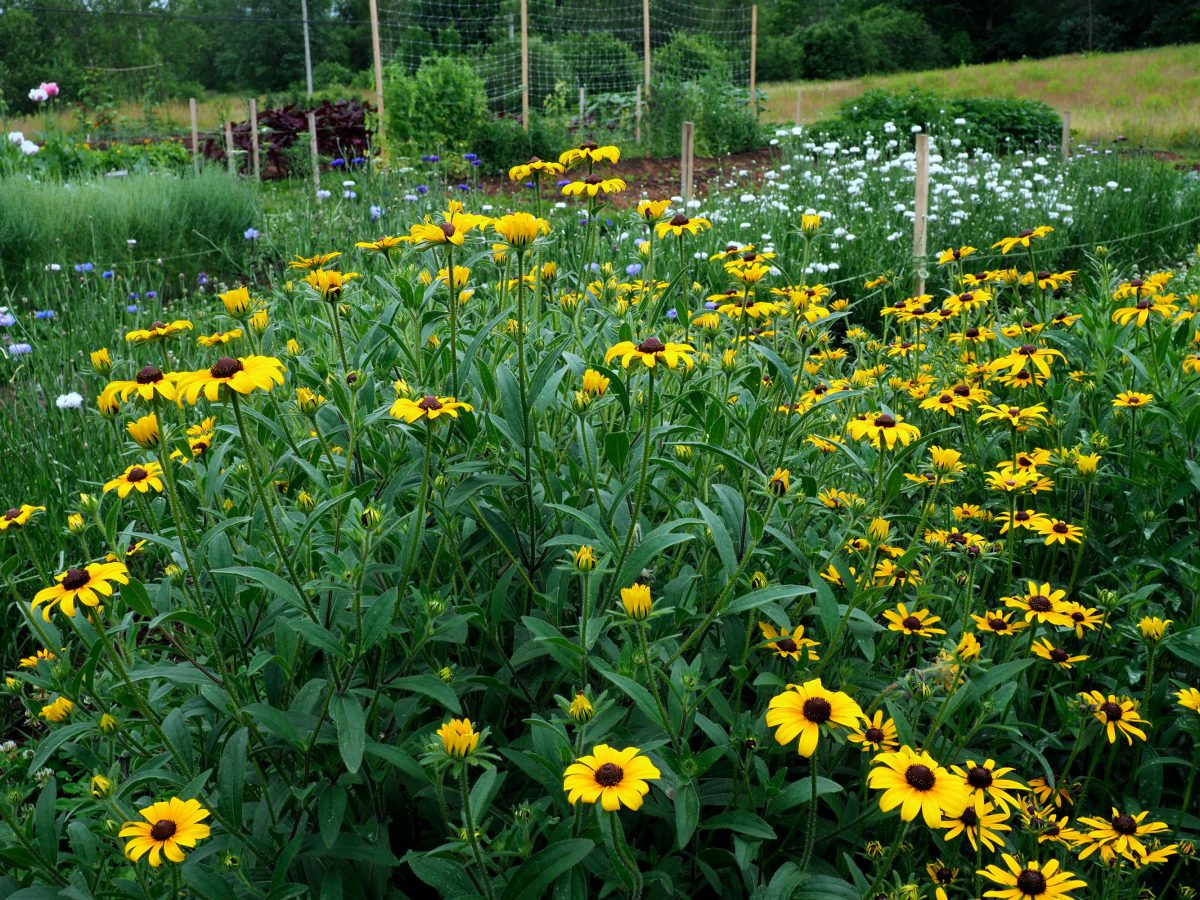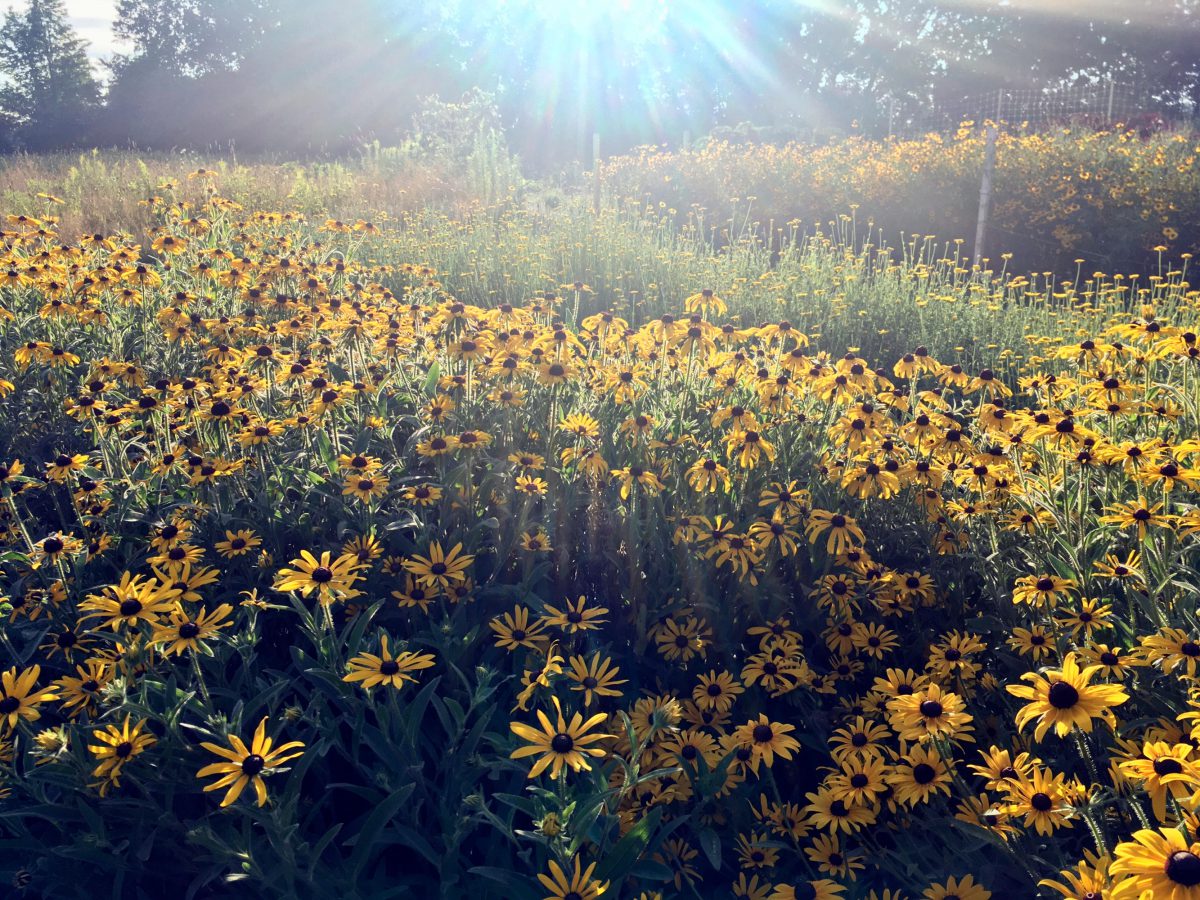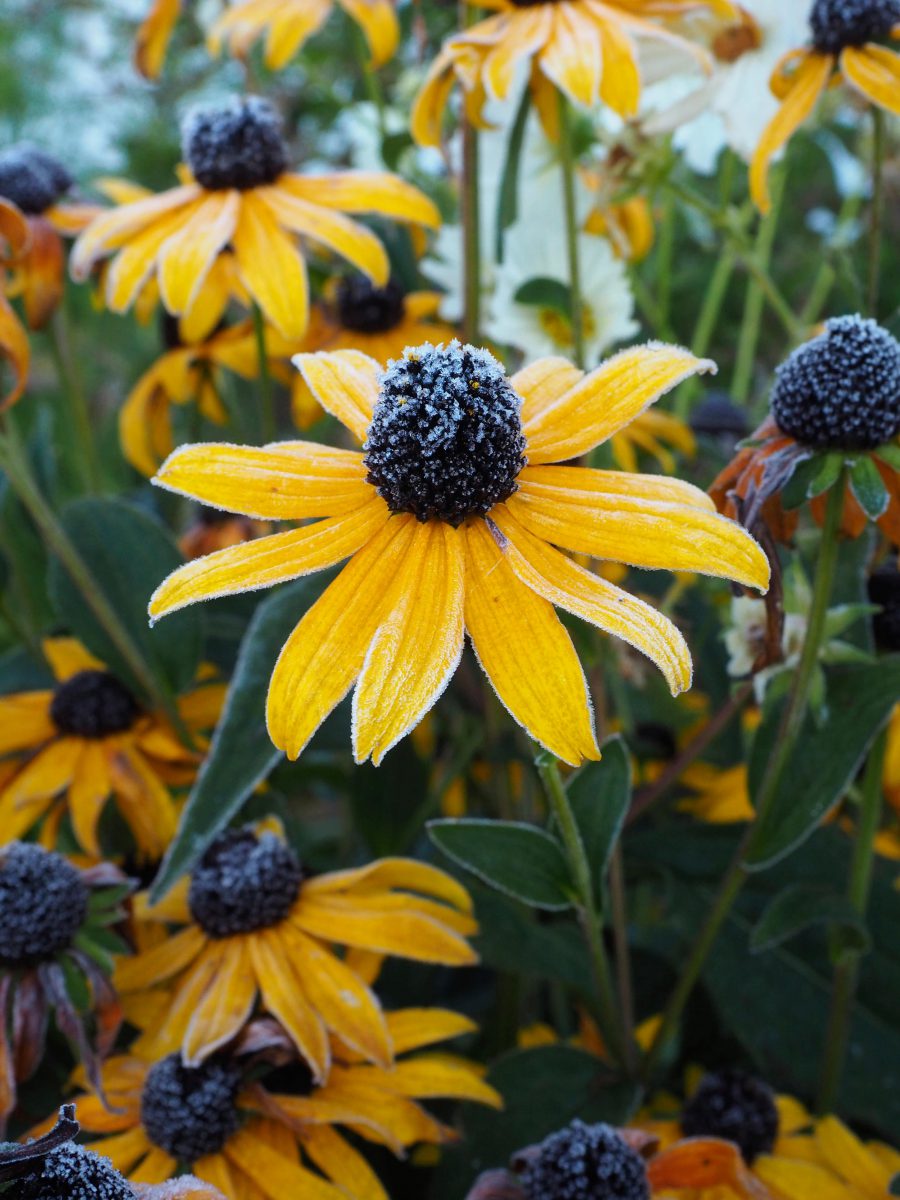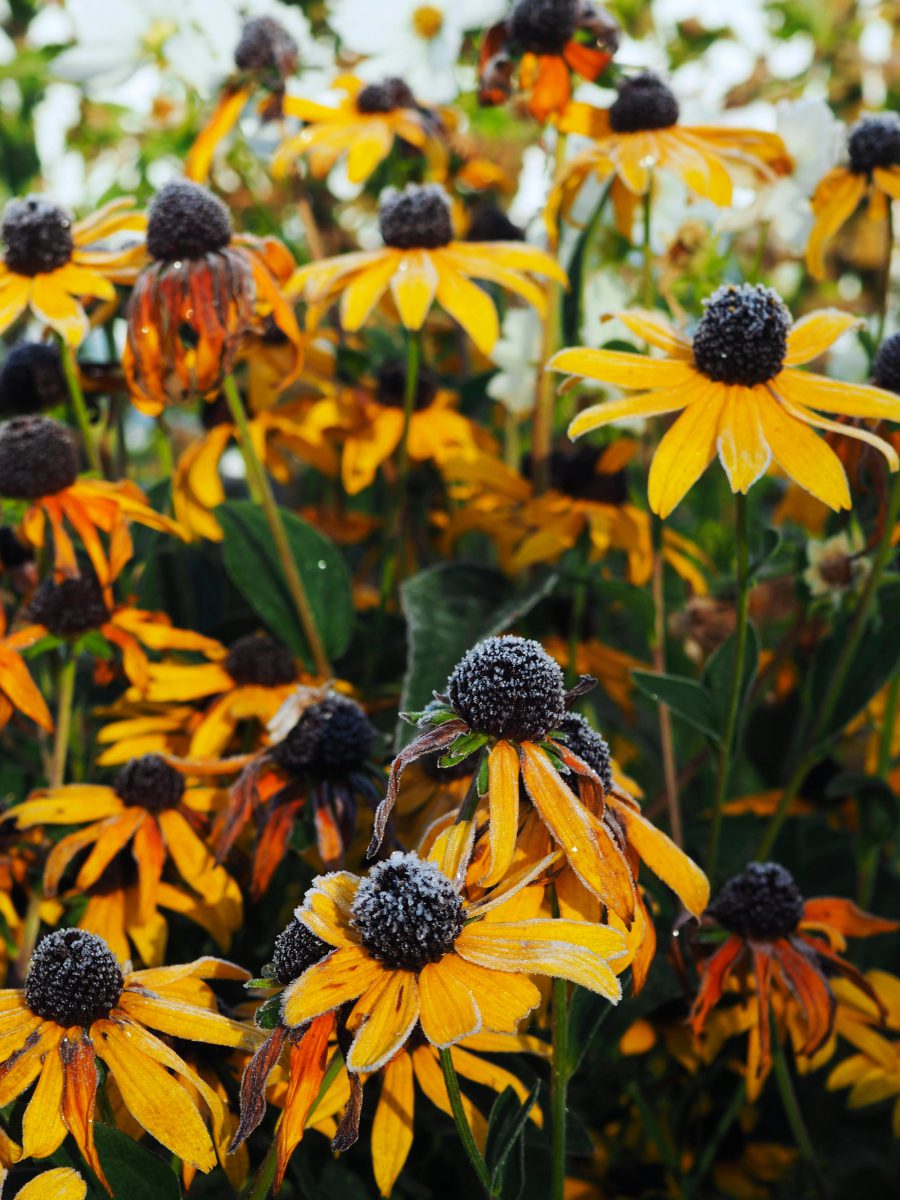Rudbeckia hirta, Rudbeckia fulgida
Cheerful golden yellow Rudbeckia (Rudbeckia hirta, Rudbeckia fulgida) flowers signal high summer on the farm. While it’s possible to get a reasonably strong shade, Rudbeckia, for the most part, tends to dye a more muted range of colours that is appealing in a soft, earthy, natural, and organic way. One feature of this dye plant is that it produces a fairly stable colour that is not much affected by light, washing, or by PH shifts.
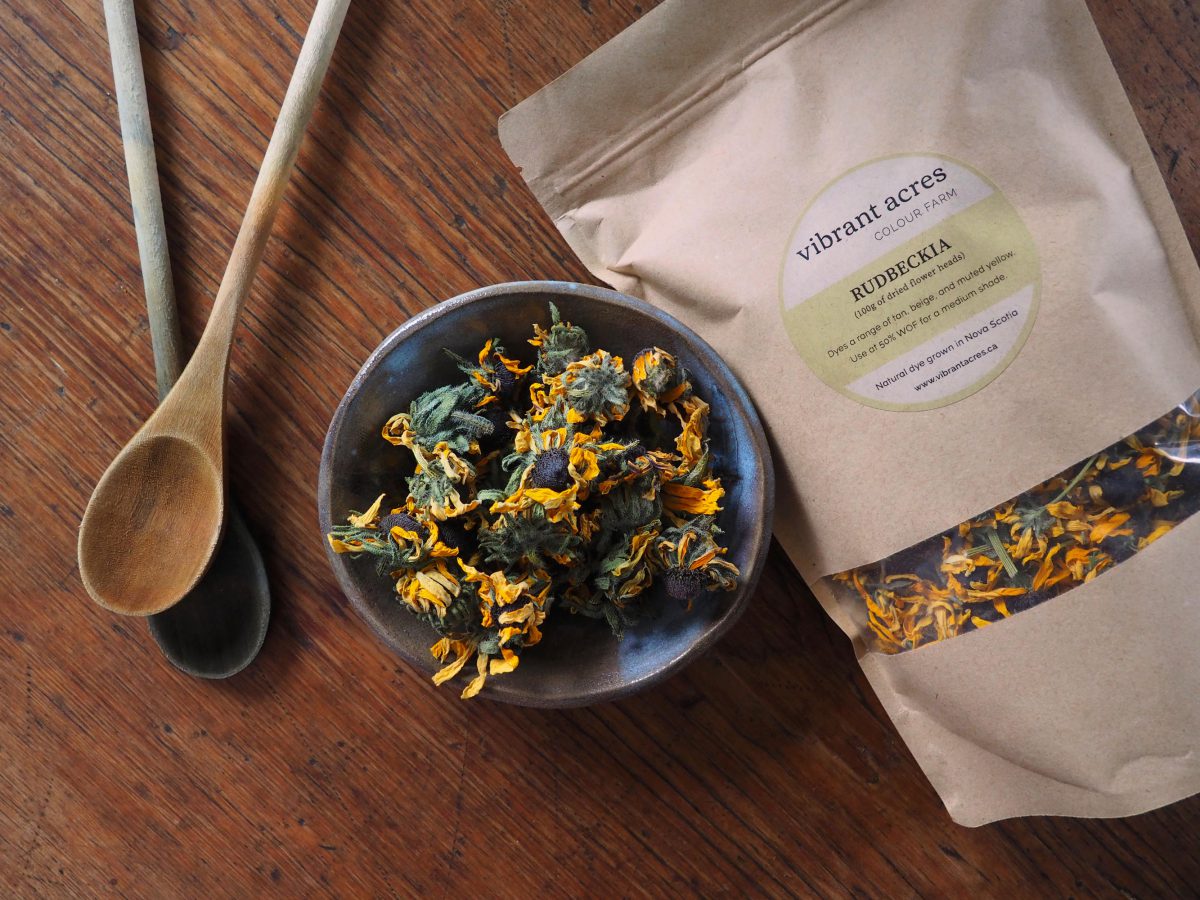
Key Dye Colours: Tan, beige, muted yellow to yellow-green
Dye Process: For the richest colour results, colour is extracted slowly over several days following the method described by Jenny Dean: Pour boiling water over the dried plant materials and leave to soak overnight; simmer for 1-2hrs and leave to steep for another 1-2 days. Strain out the plant matter, add your prepared fibres, and bring to a very low simmer for at least 1hr. Leave your fibres in the dye bath to soak overnight. (Skipping this longer process for a quick stovetop extraction by low simmer can give good results but will most often result in beige.)
Weight of Fibre (WOF): Use at 50% for a medium shade. For a darker colour, use more; for a lighter colour, use less. A bag will dye ~200g of fibre. A typical wool skein is 100g.
Key Modifiers: Iron produces a tan, brown, or olive shade.
Washfastness: Very Good.
Lightfastness: Good–Very Good.
Overall Colourfastness: Very Good.
SOLD OUT
Natural colour grown with care
This natural plant dye was grown with care on our small farm in Nova Scotia’s Annapolis Valley. All of our dye plant material is dried on site immediately after harvest to preserve quality and maximum vibrancy of colour.
Natural dyes can only be used on natural fibres (cotton, linen, wool, bamboo, hemp, silk). For best results, natural fibres should be pre-prepared using a mordant or tannin before dyeing. Natural dyes and mordants are available in our online store.
Natural dyes create unique living colours that will evolve and wear over time as they are washed, worn, and loved creating colours and garments that are alive, telling the story of their use. While they are not as consistently repeatable or as durable as many synthetic dyes, they are far more environmentally friendly and, in our opinion, absolutely unmatched in magic and beauty. If you are new to natural dyes, we have a free guide to getting started with natural dyes.
